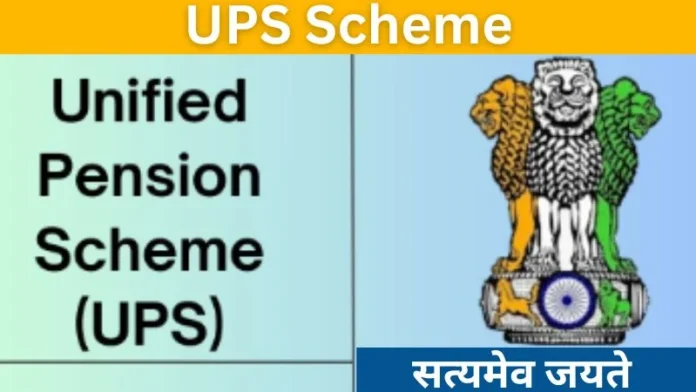Manoj Kumar Pathak
On August 24, 2024, the Union Cabinet, led by Prime Minister Narendra Modi, approved the much-anticipated Unified Pension Scheme (UPS). Set to be implemented from April 1, 2025, this new scheme is poised to transform the pension landscape for government employees. Here’s a detailed look at the key aspects of the UPS, including its benefits, features, and how it compares to existing pension schemes like the Old Pension Scheme (OPS) and the National Pension System (NPS).
Who Benefits from the Unified Pension Scheme?
The UPS is designed to benefit a substantial number of government employees. Initially, it is expected to cover approximately 23 lakh Central government employees. This number could potentially rise to 90 lakh if state governments opt to participate in the scheme.
For employees who are retiring or have already retired under the National Pension System (NPS) until March 31, 2025, the UPS will offer a choice: to continue with the NPS or switch to the UPS. It is important to note that once the choice is made, it will be irrevocable.
Key Features of the Unified Pension Scheme
- Assured Pension: Government employees who have served for a minimum of 25 years will be eligible for an assured pension amounting to 50% of the average basic pay drawn during the last 12 months of their service. This provides a stable and predictable income post-retirement.
- Minimum Pension Guarantee: Employees with at least 10 years of service will be guaranteed a minimum pension of ₹10,000 per month. This ensures a basic level of financial security for retirees.
- Family Pension: In the unfortunate event of the employee’s death, their spouse will receive a family pension. This pension will be assured at 60% of the amount that the employee was drawing before their death, offering financial support to the surviving family members.
- Inflation Indexation: Both the assured pension and the family pension will be indexed to inflation. This means that the pension amounts will adjust according to the cost of living, ensuring that retirees’ purchasing power is maintained.
- Gratuity Payment: Upon superannuation, employees will receive a lump sum gratuity payment calculated as 1/10th of their last drawn monthly pay (including dearness allowance) for every six months of completed service. Importantly, this lump sum payment will not impact the assured pension amount.
UPS vs. OPS
The Old Pension Scheme (OPS) was a defined benefit system under which retirees received 50% of their last drawn salary as a monthly pension along with a dearness allowance component. The OPS was fully government-funded and did not require employee contributions, but it created a significant financial burden on the government due to its high cost.
In contrast, the UPS introduces a more balanced approach:
- Funding: The UPS requires contributions from both employees (10%) and the government (18.5%). This shared funding model aims to reduce the financial strain on the government.
- Minimum Pension: Unlike the OPS, the UPS guarantees a minimum pension of ₹10,000 for those with at least 10 years of service.
- Family Pension: While the OPS did provide family pension benefits, the UPS offers a fixed rate of 60% of the employee’s pension, ensuring more consistent support for the family.
UPS vs. NPS
The National Pension System (NPS), introduced in 2004, is a defined contribution scheme where both employees and the government contribute to a pension fund, with investments linked to market securities. This means the final pension amount in NPS is subject to market fluctuations and investment performance.
The UPS offers a distinct advantage over NPS:
- Fixed Pension Amount : The UPS provides a fixed pension amount of 50% of the average basic pay drawn over the last 12 months, ensuring stable returns.
- Choice of Returns: Employees can choose between the assured returns under UPS or continue with the equity-linked returns of NPS, offering flexibility based on individual preferences.
The Unified Pension Scheme marks a significant overhaul in the pension system for government employees. By blending features from the Old Pension Scheme and the National Pension System, the UPS aims to provide a more balanced, equitable, and financially sustainable pension framework. With guaranteed benefits, inflation indexing, and the option to choose between assured and market-linked returns, the UPS is set to offer a more secure and adaptable pension solution for government employees.
As the implementation date approaches, the focus will be on ensuring a smooth transition and addressing any potential challenges to fully realize the benefits of this new scheme.


